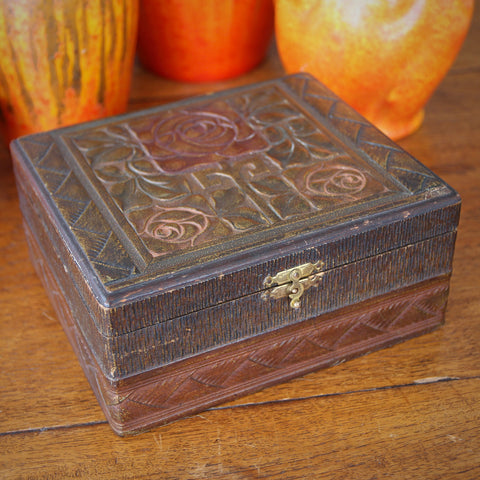We have been taught, "A prophet is never accepted in his home town." It seems this was the case for Charles Rennie Mackintosh, the foremost designer of the Scottish Arts & Crafts movement. His influence, during his lifetime, was more eagerly embraced outside of Scotland than it was at home. Many of his Scottish architectural designs were never built. He eventually abandoned architecture and focussed his later years on watercolor painting. Naturally, once he had died in 1928, his work became increasingly popular in Glasgow and his legacy has now been firm established. Today, one cannot walk five steps in Glasgow without seeing some kind of Mackintosh-inspired graphic or souvenir.
Mackintosh was born in Glasgow in 1868 and began his early working life as an architectural apprentice, drafting other designers' plans and composing decorative elements for their use. He also studied at night, winning prizes for his creativity and industry. After certification, Mackintosh began working within a partnership and, later, founded his own practice. Mackintosh's architectural work was produced during a relatively short period: 1895-1906. He designed residences, commercial buildings, schools, churches, and renovated interiors. Glasgow, one of the hottest Industrial Revolution cities in the world (shipbuilding and heavy industry), was growing madly—and needed new buildings. Mackintosh also designed furniture, textiles and metalwork—often specified for inclusion within his architectural projects.
Though modestly successful, Mackintosh became disillusioned with his life as an architect. He and his wife, artist Margaret Macdonald (whom he met in art school and married in 1900), moved to England in 1914 and to the South of France in 1923. During this time he focussed on painting—with the collaboration of his wife, who had long assisted him with Arts & Crafts decorative design.
While Glasgow remained cool to Mackintosh, he was lionized elsewhere. In England, Germany, Hungary, Austria, and Russia, Mackintosh had great influence on those countries' national Arts & Crafts movements. Even in the United State, Mackintosh was recognized and appreciated.
The cigar box, shown above, is embossed with a Mackintosh Rose. Click on the photo above to learn more about it.
Though our Greenwich Village store is now permanently closed, LEO Design is still alive and well! Please visit our on-line store where we continue to sell Handsome Gifts (www.LEOdesignNYC.com).
We also can be found in Canonsburg, Pennsylvania, at The Antique Center of Strabane (www.antiquecenterofstrabane.com).
Or call to arrange to visit our Pittsburgh showroom (by private appointment only). 917-446-4248


